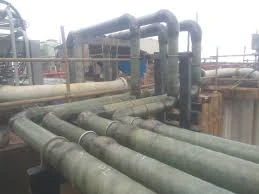
-
 Afrikaans
Afrikaans -
 Albanian
Albanian -
 Amharic
Amharic -
 Arabic
Arabic -
 Armenian
Armenian -
 Azerbaijani
Azerbaijani -
 Basque
Basque -
 Belarusian
Belarusian -
 Bengali
Bengali -
 Bosnian
Bosnian -
 Bulgarian
Bulgarian -
 Catalan
Catalan -
 Cebuano
Cebuano -
 China
China -
 China (Taiwan)
China (Taiwan) -
 Corsican
Corsican -
 Croatian
Croatian -
 Czech
Czech -
 Danish
Danish -
 Dutch
Dutch -
 English
English -
 Esperanto
Esperanto -
 Estonian
Estonian -
 Finnish
Finnish -
 French
French -
 Frisian
Frisian -
 Galician
Galician -
 Georgian
Georgian -
 German
German -
 Greek
Greek -
 Gujarati
Gujarati -
 Haitian Creole
Haitian Creole -
 hausa
hausa -
 hawaiian
hawaiian -
 Hebrew
Hebrew -
 Hindi
Hindi -
 Miao
Miao -
 Hungarian
Hungarian -
 Icelandic
Icelandic -
 igbo
igbo -
 Indonesian
Indonesian -
 irish
irish -
 Italian
Italian -
 Japanese
Japanese -
 Javanese
Javanese -
 Kannada
Kannada -
 kazakh
kazakh -
 Khmer
Khmer -
 Rwandese
Rwandese -
 Korean
Korean -
 Kurdish
Kurdish -
 Kyrgyz
Kyrgyz -
 Lao
Lao -
 Latin
Latin -
 Latvian
Latvian -
 Lithuanian
Lithuanian -
 Luxembourgish
Luxembourgish -
 Macedonian
Macedonian -
 Malgashi
Malgashi -
 Malay
Malay -
 Malayalam
Malayalam -
 Maltese
Maltese -
 Maori
Maori -
 Marathi
Marathi -
 Mongolian
Mongolian -
 Myanmar
Myanmar -
 Nepali
Nepali -
 Norwegian
Norwegian -
 Norwegian
Norwegian -
 Occitan
Occitan -
 Pashto
Pashto -
 Persian
Persian -
 Polish
Polish -
 Portuguese
Portuguese -
 Punjabi
Punjabi -
 Romanian
Romanian -
 Russian
Russian -
 Samoan
Samoan -
 Scottish Gaelic
Scottish Gaelic -
 Serbian
Serbian -
 Sesotho
Sesotho -
 Shona
Shona -
 Sindhi
Sindhi -
 Sinhala
Sinhala -
 Slovak
Slovak -
 Slovenian
Slovenian -
 Somali
Somali -
 Spanish
Spanish -
 Sundanese
Sundanese -
 Swahili
Swahili -
 Swedish
Swedish -
 Tagalog
Tagalog -
 Tajik
Tajik -
 Tamil
Tamil -
 Tatar
Tatar -
 Telugu
Telugu -
 Thai
Thai -
 Turkish
Turkish -
 Turkmen
Turkmen -
 Ukrainian
Ukrainian -
 Urdu
Urdu -
 Uighur
Uighur -
 Uzbek
Uzbek -
 Vietnamese
Vietnamese -
 Welsh
Welsh -
 Bantu
Bantu -
 Yiddish
Yiddish -
 Yoruba
Yoruba -
 Zulu
Zulu
FRP Chimney Design and Installation for Industrial Applications and Efficiency Solutions
FRP Chimney Construction and Installation for Industrial Facilities
In the realm of industrial construction, the choice of materials significantly impacts the longevity, functionality, and efficiency of structures. One material that has been gaining prominence in recent years is Fiber Reinforced Polymer (FRP). Particularly when it comes to chimneys, FRP offers a myriad of advantages that traditional materials like steel or concrete often cannot match.
Understanding FRP
FRP is a composite material made of a polymer matrix reinforced with fibers, typically glass, carbon, or aramid. This combination results in a material that is lightweight yet incredibly strong, resistant to corrosion, and flexible in terms of design. These properties make FRP an excellent choice for industrial chimneys, which are exposed to harsh environmental conditions and aggressive pollutants.
Benefits of FRP Chimneys
1. Corrosion Resistance One of the primary advantages of FRP is its superior resistance to corrosion. Traditional metal chimneys can suffer from rust and degradation over time, especially in environments with high moisture or aggressive chemicals. FRP chimneys, however, can withstand acidic and alkaline substances, extending their lifespan and reducing maintenance costs.
2. Lightweight Design The lightweight nature of FRP not only eases the logistics of handling and installation but also allows for more diverse designs. Because FRP chimneys don't require the same substantial foundations as concrete or steel, construction times can be significantly reduced.
3. Thermal Insulation FRP materials exhibit good thermal insulation properties. This means that temperature fluctuations within the chimney are minimized, which can be critical when dealing with high-temperature exhaust gases.
4. Environmental Benefits With increasing regulations concerning emissions and environmental impact, the implementation of FRP chimneys can contribute to lower pollution levels. Their smooth internal surfaces promote better flow dynamics, which can enhance the efficiency of smoke and gas dispersion.
5. Cost-Effectiveness Although the upfront cost of FRP materials may be higher than traditional options, the overall lifecycle costs can be substantially lower. Reduced maintenance and longer service life result in significant savings over time.
frp chimney construction and installation for industrial and

Construction and Installation Process
The construction of FRP chimneys involves several key steps, each of which requires careful planning and execution
1. Design and Engineering The first step is to engage in detailed design and engineering. This phase includes assessing the specific requirements based on the facility’s emissions, height, and location. Advanced modeling software can be utilized to simulate performance under various conditions.
2. Material Selection Choosing the right type of FRP is critical. The selection depends on the operational environment, including temperature, humidity, and the type of gases being expelled.
3. Fabrication Once the design and materials are finalized, the FRP components are fabricated. This typically takes place in a controlled environment, ensuring quality and precision. Components can be produced as modular sections for easier handling and transportation to the site.
4. Installation The installation process starts with preparing the site, which may involve setting up foundations and anchoring systems. The modular pieces are then gradually assembled, often using cranes for lifting. Skilled workers ensure that each segment is correctly aligned and sealed to prevent any leakage.
5. Testing After installation, rigorous testing is conducted to ensure that the chimney meets all safety and environmental regulations. This may include pressure tests and checks on structural integrity.
Conclusion
In conclusion, the use of FRP for industrial chimney construction and installation represents a forward-thinking approach to enhancing efficiency and durability in industrial systems. Its remarkable properties address common challenges faced with traditional materials, making it a compelling choice for modern industrial applications. With ongoing advancements in material sciences and production techniques, the role of FRP in construction is poised to expand even further, paving the way for more sustainable and resilient industrial infrastructures.









